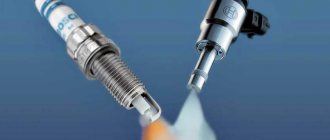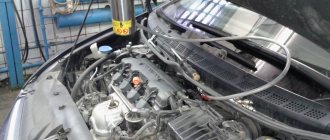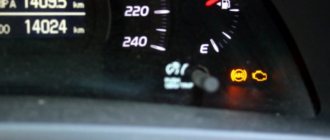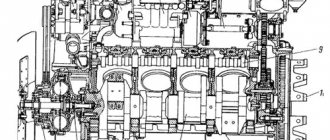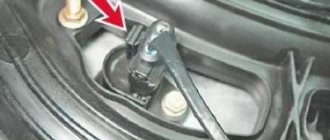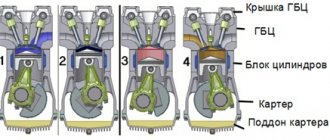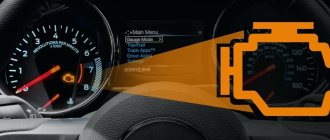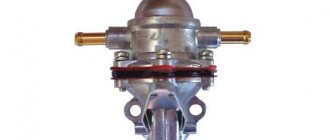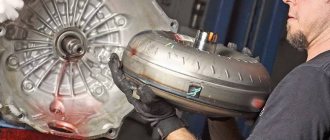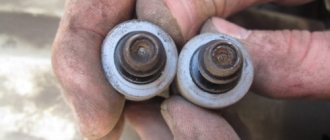The fuel injection system in modern diesel engines is extremely accurate, but very fragile, which is the reason for its frequent failure. What are the signs of faulty fuel injectors and what can you do to ensure the repair doesn't put a big dent in your wallet?
Why do injectors break?
The answer to this question is very simple - they do not withstand the operating conditions in which they are used. Injectors have gone through such a long evolution and even a revolution that they are simply reaching the limit of their capabilities. If we look back, in the mid-90s, injectors installed on diesel engines had an injection pressure of 1350 bar. Today the norm is pressure of 2000 bar or more. The design of the injectors themselves has also changed, but still does not save them from damage.
Why did the injection pressure increase so much? Today we demand high performance from modern diesel engines. Engines must be dynamic while maintaining reasonable displacement. And also consume little fuel. The norm is the production of a 2-liter power unit, which has a power of 150 horsepower and a torque of more than 300 Nm and, of course, does not consume more than 7 liters of diesel fuel per 100 km.
Signs of injector failure
The principle of operation of the injectors is obvious. They are responsible for the dosage and supply of fuel. The injectors are controlled by a computer that knows exactly what dose of fuel they should supply. It all depends on your driving style. This system works great and provides excellent performance. The problem appears when the system loses its integrity. The most common cause of injector failure is poor fuel quality. If you fail to regularly replace the fuel filter or refuel with fuel of dubious origin, you can undoubtedly expect trouble. Injectors are very sensitive to the quality of diesel fuel. Over time, they begin to become dirty until they are completely clogged. Removing deposits from low-quality fuel is impossible without mechanical cleaning. Injector malfunctions usually occur at high mileage, most often far beyond 150,000 km. Of course this is not the rule. Often, cars with original injectors overcome the 300,000 km mark, subject to timely maintenance and refueling with good fuel.
The driver should quickly notice that the injectors are starting to act up. The first sign is that the ride becomes more enjoyable. This is a paradox, but faulty injectors can significantly overflow fuel (the electronics do not correctly determine the dosage), which gives the car increased agility. But this does not last long and soon this process has the opposite effect. If the injectors malfunction, the smoke of the car increases greatly, especially when you press the gas sharply. The engine oil level increases noticeably as fuel begins to seep into it. Uneven idle speed of the engine appears. In the morning, the car starts to start worse and smokes when warming up.
When replacing injectors, you must carefully determine the manufacturer. It is best to start from the one that was installed on the car as the original. Car manufacturers do not use their own brand of injectors. As a rule, they use components provided by leading companies in their field. In modern diesel engines you can find injectors of the following brands: - Bosch - by far the most popular, injectors are installed on most cars, including JTD, CDI, CDTI, HDI, D5, 1.9 and 2.0 dCI engines; — Delphi — Ford engines with a Common Rail system, 1.4 HDi for Citroen C3, 1.5 dCI engines for Renault; — Siemens — some models of French cars with 1.4 and 2.0 HDi engines, Volvo D4 engine in the S40 model, 2.0 TDCi PSA, Audi and Volkswagen 2.0 TDI CR engines; - Denso - mainly Japanese brands, 2.0 CD engines for Mazda 6, 2.0, 2.2 and 3.0 D-4D for Toyota.
Source autozapchasti24.ru
The injectors of a diesel engine, as well as an injection engine, periodically become dirty. Therefore, many owners of cars with a diesel engine are wondering - how to check the injectors on a diesel engine? As a rule, if they are clogged, fuel is not supplied to the cylinders in a timely manner, and increased fuel consumption occurs, as well as overheating and destruction of the piston. In addition, burnout of the valves and failure of the particulate filter are possible.
Diesel engine injectors
Checking diesel injectors at home
Common Rail fuel systems (with a common rail) and pump injectors (where each cylinder is separately supplied with its own injector) can be used.
They are both capable of ensuring high environmental friendliness and engine efficiency. Since these diesel systems function and are designed in a similar way, but Common Rail is more progressive in terms of efficiency and noise level, although it loses in power, and has become increasingly used on passenger cars, we will talk about it further. And we’ll talk about the operation, malfunctions and testing of pump injectors separately, because this is an equally interesting topic, especially for owners of VAG group cars, since software diagnostics are quite easy to perform there.
The simplest method for calculating a clogged injector in such a system can be carried out using the following algorithm:
Common rail injector
- at idle speed, bring the engine speed to the level where problems in engine operation are most clearly audible;
- each of the injectors is turned off by loosening the union nut at the attachment point of the high-pressure line;
- when you turn off a normal working injector, the operation of the engine changes, but if the injector is problematic, the engine will continue to operate in the same mode.
In addition, you can check the injectors with your own hands on a diesel engine by feeling the fuel line for shocks. They will be the result of the fact that the injection pump is trying to pump fuel under pressure, but due to the clogged injector, difficulties arise in passing it through. A problematic fitting can also be identified by an elevated operating temperature.
The main signs of injector malfunctions in a diesel engine
The main signs of injector failures
1) The first thing you should pay attention to is a violation of the engine operating mode. The nozzle is responsible for the correct dosing and supply of fuel mass into the reactor zone, and at the slightest failure of these conditions, the operating mode of the entire power unit is immediately disrupted. In general, this is also manifested by the following signs: 2) frequent failures when starting the engine; 3) the occurrence of “excessive” noise during operation in the engine area; 4) decreased power of the power unit;
5) increased fuel consumption;
6) interruptions in engine operation; 7) increased smoke generation from the exhaust system;
 pops from the muffler.
pops from the muffler.
Each of these symptoms is an external manifestation of some process caused by equipment failure. Therefore, it is extremely important to promptly detect and prevent destruction of the fuel system and subsequent engine damage.
How to accurately determine whether an injector is faulty?
If all of the above symptoms or only some of them are detected, the best way to confirm or, on the contrary, refute the failure of the injectors is to turn to professional diagnostics. Modern service centers are equipped with all the necessary equipment for this. So, as a primary check, a special test is carried out to determine whether the device meets factory specifications. In addition, timely, accurate diagnostics and repair of injectors from Delphi, Bosch and other well-known manufacturers will save not only fuel, time and money, but will also prevent breakdown of the power unit.
Why do injectors break down?
The main reason for injector failure is poor quality fuel. However, there is no absolutely clean fuel mass, and therefore repairs to the Common Rail fuel system must be carried out regularly. An indirect cause of its failure may be the expiration of the fuel filter, the use of incorrect fuel additives, as well as irregular flushing of the tank and the entire fuel system. Therefore, repairing or restoring injectors is twice as profitable as buying a new one.
Checking diesel injectors for overflow (drain to return)
Checking the volume of return flow
As diesel injectors wear out over time, a problem arises due to the fact that the fuel from them gets back into the system, due to which the pump cannot generate the required operating pressure. The consequence of this may be problems with starting and operating the diesel engine.
Before the test, you will need to buy a 20 ml medical syringe and an IV system (to connect the syringe you will need a 45 cm long tube). To find an injector that throws more fuel into the return line than it should, you need to use the following algorithm:
- remove the plunger from the syringe;
- with the engine running, use the system to connect the syringe to the “return” of the injector (insert the tube into the neck of the syringe);
- hold the syringe for two minutes so that fuel is drawn into it (provided that it will be filled);
- repeat the procedure one by one for all nozzles or build a system for all of them at once.
Based on information about the amount of fuel in the syringe, the following conclusions can be drawn:
Checking the return flow
- if the syringe is empty, it means the nozzle is fully operational;
- the amount of fuel in a syringe with a volume of 2 to 4 ml is also within normal limits;
- if the volume of fuel in the syringe exceeds 10.15 ml, this means that the injector is partially or completely out of order and needs to be replaced/repaired (if it pours 20 ml, then it is useless to repair, since this indicates wear of the injector valve seat ), since it does not maintain fuel pressure.
However, such a simple check without a hydraulic stand and plan test does not give a complete picture. Indeed, in fact, when the engine is running, the amount of fuel discharged depends on many factors; it can be clogged and needs to be cleaned, or it freezes and needs to be repaired or replaced. Therefore, this method of checking diesel injectors at home allows you to only judge their throughput capabilities. Ideally, the amount of fuel volume they pass through should be the same and range up to 4 ml in 2 minutes.
To ensure that the injectors last as long as possible, refuel with high-quality diesel fuel. After all, it directly depends on the operation of the entire system. In addition, install original fuel filters and do not forget to change them on time.
Why do injectors on a diesel engine fail?
The injectors on a diesel engine come out faster than on a gasoline engine. This is due to the fact that these motors have different operating principles. But in both cases, the culprit is low-quality fuel or untimely replacement of the fuel filter. If you service the car on time, the injectors should work for at least 150,000 km without replacement or repair. If you also use high-quality fuel, then the factory injectors should last 200-300 thousand km.
But, as a rule, the fuel used is not of the highest quality, and filters are rarely changed. Therefore, the injectors in modern diesel engines hardly last 150 thousand km. Then they become dirty and begin to dose fuel incorrectly. To fix this, you will have to at least mechanically clean them of deposits and dirt. It is better not to put this procedure on the back burner, but to entrust the work to people who understand this.
Therefore, fill with high-quality fuel, do maintenance on time and you will be happy! That's all! No nails, no wands and see you again on our website!
I'm new to diesel engines Question ❓ what symptoms appear when the injector overflows or is already dead and when the fuel pump is running low?!
Checking injectors using special instruments
A more serious check of diesel engine injectors is carried out using a device called a maximeter . This name refers to a special model nozzle with a spring and scale. With their help, the pressure at the start of diesel fuel injection is set.
Another verification method is to use a control model working injector , with which the devices used in the engine are compared. All diagnostics are performed with the engine running. The algorithm of actions is as follows:
- dismantle the injector and fuel line from the engine;
- a tee is connected to the free fitting of the fuel injection pump;
- loosen the union nuts on other fuel injection pump fittings (this will allow fuel to flow to only one injector);
- the control and tested nozzles are connected to the tee;
- activate the decompression mechanism;
- rotate the crankshaft.
Ideally, the control and tested injectors should show the same results regarding the simultaneous start of fuel injection. If there are deviations, it means that the nozzle needs to be adjusted.
The control sample method usually takes longer than the maximeter method. However, it is more accurate and reliable. You can also check the operation of the engine and injectors of a diesel engine and fuel injection pump on a special adjustment stand. However, they are only available at specialized service stations.
Cleaning diesel injectors
Cleaning diesel injectors
You can clean diesel engine injectors yourself. Work must be carried out cleanly and in good lighting. To do this, the injectors are removed and washed either in kerosene or in diesel fuel without impurities. Before reassembling, you need to blow off the nozzle with compressed air.
It is also important to check the quality of fuel atomization, that is, the shape of the injector “torch”. There are special techniques for this. First of all, you need a test bench. There they connect the injector, supply fuel to it and look at the shape and strength of the jet. Often, a blank sheet of paper is used for testing, which is placed under it. Traces of fuel ingress, the shape of the torch and other parameters will be clearly visible on the sheet. Based on this information, it will be possible to make the necessary adjustments in the future. A thin steel wire is sometimes used to clean the nozzle. Its diameter should be at least 0.1 mm smaller than the diameter of the nozzle itself.
Possible malfunctions of diesel injectors
The most common cause of malfunction is a malfunction of the needle in the nozzle guide sleeve. If its value is reduced, then a large amount of fuel flows through the new gap. In particular, for a new injector, a leak of no more than 4% of the working fuel that enters the cylinder is allowed. In general, the amount of fuel from the injectors should be the same. You can detect a fuel leak at the injector as follows:
- find information about what pressure should be when opening the needle in the injector (it will be different for each engine);
- remove the nozzle and install it on the test bench;
- create obviously high pressure on the nozzle;
- Using a stopwatch, measure the time after which the pressure drops by 50 kgf/cm2 (50 atmospheres) from the recommended value.
Checking the injector on the stand
This time is also specified in the technical documentation for the engine. Typically for new injectors it is 15 seconds or more. If the nozzle is worn, this time can be reduced to 5 seconds. If the time is less than 5 seconds, then the injector is already inoperative. You can read additional information on how to repair diesel injectors (replace nozzles) in the additional material.
If the injector valve seat is worn out (it does not hold the required pressure and excessive drainage occurs), repairs are useless and will cost more than half the cost of a new one (which is about 10 thousand rubles).
Sometimes a diesel injector may leak a small or heavy amount of fuel. And if in the second case only repairs and a complete replacement of the nozzle are necessary, then in the first case you can do it yourself. In particular, it is necessary to grind the needle to the seat. After all, the main reason for leakage is a violation of the seal at the end of the needle (another name is a sealing cone).
To remove leaks from a diesel injector, thin GOI grinding paste is often used, which is diluted with kerosene. During lapping, it is necessary to ensure that the paste does not get into the gap between the needle and the bushing. At the end of the work, all elements are washed in kerosene or diesel fuel without impurities. After this, you need to blow them with compressed air from the compressor. After assembly, check again for leaks.
conclusions
Partially failed injectors are not critical, but a very unpleasant breakdown . After all, their incorrect operation leads to a significant load on other components of the power unit. In general, the machine can be operated with clogged or misconfigured injectors, but it is advisable to carry out repairs as quickly as possible. This will keep your car engine in working condition, which will save you from even greater financial expenses. So, when the first symptoms of unstable operation of the injectors on your diesel car appear, we recommend that you at least check the functionality of the injector in an elementary way, which, as you can see, anyone can do at home.
Source m.etlib.ru
Signs of injector malfunction: identifying breakdowns
The fuel system in diesel engines has extremely precise settings. The injectors are responsible for supplying fuel in measured quantities, any malfunction of which negatively affects the performance of the power unit. In this case, it is often possible to avoid the costly replacement of the entire injection system by restoring failed elements.
What warning signs should you look out for?
The following signs may indicate the need to repair one or more injectors:
1. A drop in engine power, the most common reasons for which are:
- mechanical damage to the sprayer;
- violation of injector settings;
- uneven dosing of fuel during injection;
- contamination of fuel holes in which carbon deposits have formed.
2. Unstable operation of the motor, in most cases due to:
- air entering the fuel system;
- broken injector spring;
- wear or damage to the fuel valve;
- mismatched settings of interacting nozzles;
- malfunction of the nozzle, as a result of which fuel flows, and the direction of injection is distorted.
3. Problems with starting the engine, the causes of which, in addition to failure of the injectors, may be:
- broken injection timing;
- air masses trapped in the fuel system.
4. The appearance of black exhaust, which is most often associated with:
- insufficient pressure level in the nozzle;
- a malfunction of the sprayer, in which the needle may jam;
- damage to the injector spring;
- delayed timing of fuel injection;
- functional disorders of the atomizer, in which the nozzle “pours” diesel.
5. Extraneous sounds in the engine, mainly indicating problems such as:
- significantly increased operating pressure in the nozzle;
- a sprayer that does not perform its function, “pouring” fuel;
- incorrectly adjusted injection timing.
6. Increased fuel consumption, regardless of the operating mode of the vehicle. Among the main reasons are:
- injection cone that does not meet the standards;
- violations in the nozzle settings;
- use of low-quality fuel that is not sufficiently purified from large particles;
- timely wear of the nozzle, which has exhausted the resource declared by the manufacturer.
Engine trouble due to injector failure
When the pressure in the fuel system of a diesel car decreases, insufficient filling of one of the existing injectors may occur, which in such conditions is not able to perform its function. This stops the fuel supply to the cylinder. In addition, the motor may fail due to failure of the valve or nozzle. In this case, the nozzle is not able to provide the required pressure, as well as prevent gas breakthrough.
Diesel Center specialists are ready to identify and eliminate any of the above faults as quickly as possible, using the most modern equipment to diagnose and repair injectors.
How to identify a leaking nozzle?
Savings persuade many motorists to purchase a car with a diesel power unit. But new diesel power systems can spoil all the advantages due to their high cost, because new injectors cost a lot.
Manufacturers claim that the injector is designed to operate for 100-150 thousand kilometers. But in fact, they can work even more, but then you need to be vigilant so as not to miss the moment of nozzle failure.
Why do injectors break?
As soon as the engine begins to develop insufficient power, when the load on the engine increases, dips and jerks appear, and at low speeds the operation of the power unit becomes unstable, then you should immediately think about going to a service station for repairs or to an auto shop to buy new injectors.
Most often, injectors break due to various types of contamination. Since these parts are constantly exposed to high temperatures, the resins contained in the fuel become coked at the nozzle. These hard deposits can block the spray ports, causing the needle valve to become unsealed. This can lead to the fact that even high-quality Denso injectors begin to spray fuel poorly or even leak. A clogged fuel system can cause other injector components, such as the passages or filter, to become clogged. Most often, common rail injectors are repaired using ultrasonic cleaning.
The first signs of a leaking nozzle
A pouring nozzle is a nozzle that does not spray fuel well or simply drains it in a stream into the combustion chamber. What are the signs that the injector is not working properly? First of all, you can feel twitching at idle or during low load modes. When the engine warms up a little, the twitching will decrease, because in a warm engine the fuel evaporates much better, even if the atomization is disrupted.
If the car does not start on the first try, but only on the second or third, and before it always started normally even with a similar temperature outside, then this is also a sign of a leaking injector. The thing is that if the injector is flowing, it lets fuel through even when the engine is not running. Due to this, the pressure in the ramp drops very significantly. And due to the fact that the fuel pump only works for a few seconds during start-up and then turns off at the software level, this is not enough to ensure that there is the required pressure in the fuel rail. That is why the engine has to be started several times in order for the pressure to equalize to the required level.
In addition, if at least one of the injectors is leaking, the air-fuel mixture becomes very lean. It is known that such a mixture burns much worse and is more prone to detonation. This can be noticed by the knock sensor, but many car enthusiasts simply do not pay attention to it, mistakenly believing that it is the sensor itself that is broken.
Sometimes a flash occurs in the engine when the starter has not yet worked. This is also one of the signs that fuel is leaking from the injectors. This pop most often means that an idle spark from the ignition ignited the leaking fuel.
Reasons for repairing diesel engine injectors
The main problem is that any car engine carries out its daily work in conditions that are far from ideal. Therefore, it is possible to identify a number of main factors leading to the failure of injectors in fuel supply systems of diesel engines, namely:
- possible low quality of diesel fuel at gas stations, that is, a deviation from the stated industry standards, which will contribute to the incorrect formation of the air-fuel mixture in the engine combustion chamber, which will lead to a very early or late phase of its ignition and, as a result, this will lead to burnout of injector parts;
- the presence of additives or dyes in diesel fuel, which will contribute to the contamination of the internal channels of the injectors during constant operation at high pressures and high temperatures;
- the presence of heavy fractions of hydrocarbons in automobile fuel, which will be constantly deposited and gradually accumulate on the injector body every time the engine is started and stopped, since heavy hydrocarbons are unable to completely burn or evaporate. At the same time, they form poorly washed off resinous deposits or particles of solid soot, thus, the resulting build-up in the channel of only 5 micrometers reduces the throughput of the nozzle by at least 15%;
- the presence of small fractions of various foreign substances, such as metal particles separated from the rubbing parts of fuel pumps during operation, as well as rust separated from the walls of fuel tanks. This, when passing under high pressure at high speed through the valves and nozzles, will lead to wear of parts and erosion of the surface of the fuel injector assemblies.
